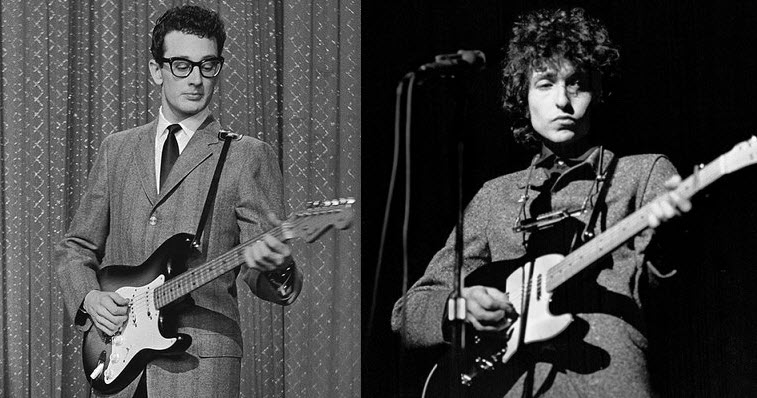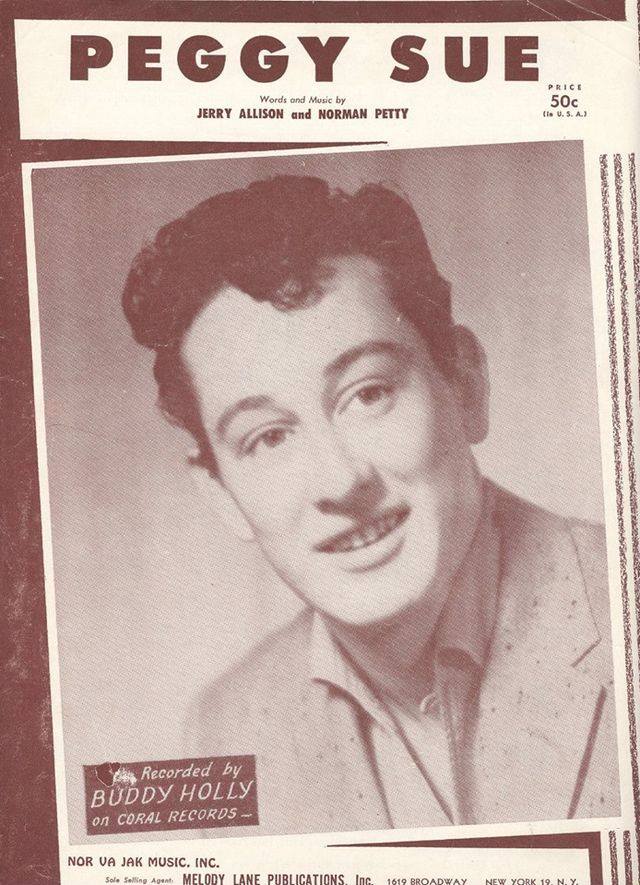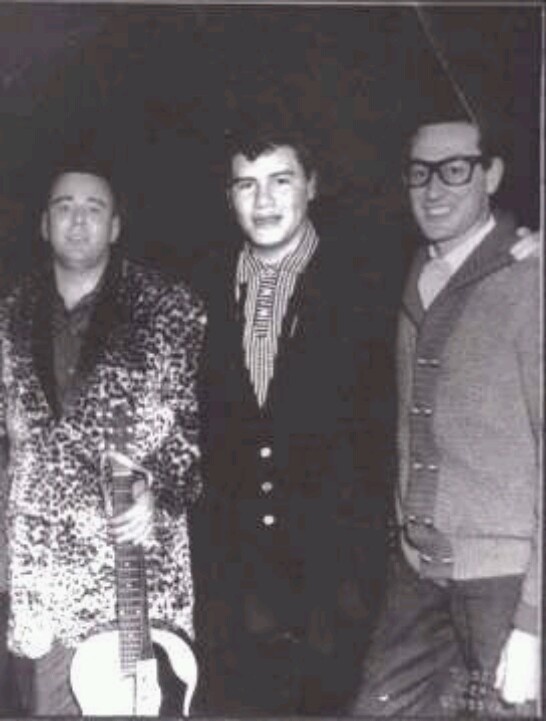
[vc_row][vc_column][vc_message message_box_color=”mulled_wine” icon_fontawesome=”fa fa-quote-left”]I saw Buddy Holly two or three nights before he died. I saw him in Duluth [Minnesota], at the armory. He played there with Link Wray. I don’t remember the Big Bopper. Maybe he’d gone off by the time I came in. But I saw Richie Valens. And Buddy Holly, yeah. He was great. He was incredible. I mean, I’ll never forget the image of seeing Buddy Holly up on the bandstand. And he died – it must have been a week after this. It was unbelievable.
~Bob Dylan (to Kurt Loder, March 1984)
Buddy Holly. You know, I don’t really recall exactly what I said about Buddy Holly, but while we were recording [Time Out Of Mind], every place I turned there was Buddy Holly. You know what I mean? It was one of those things. Every place you turned. You walked down a hallway and you heard Buddy Holly records, like “That’ll Be the Day.” Then you’d get in the car to go over to the studio and “Rave On” would be playing. Then you’d walk into this studio and someone’s playing a cassette of “It’s so Easy.” And this would happen day after day after day. Phrases of Buddy Holly songs would just come out of nowhere. It was spooky. [laughs] But after we recorded and left, you know, it stayed in our minds. Well, Buddy Holly’s spirit must have been someplace, hastening this record.
~Bob Dylan (to Murray Engleheart 1998)[/vc_message][/vc_column][/vc_row]
On this day in 1936 Buddy Holly was born.
Here are some Buddy Holly songs covered by Bob Dylan:
Continue reading “September 7: Buddy Holly birthday – Bob Dylan covers Buddy Holly”


